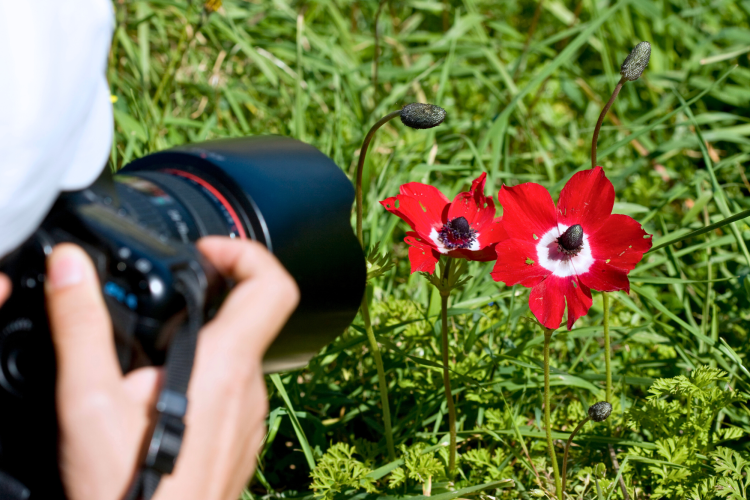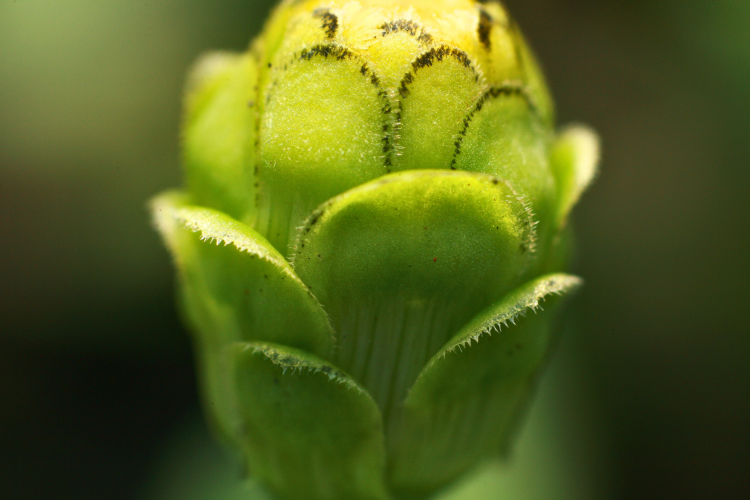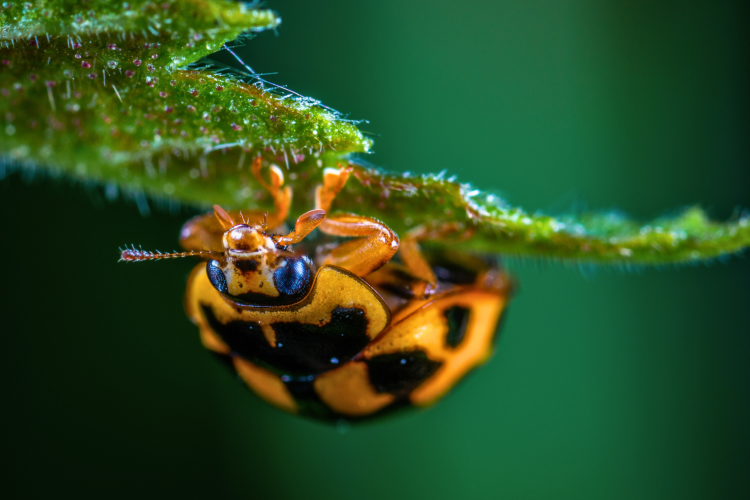Getting Started With Macro Photography in 2026

Are you wondering, "What is macro photography?" If so, you've come to the right place. This form of photography is a fascinating way to explore the tiny details of the world around us that often go unseen.
By using special techniques and equipment, you can capture close-up images of subjects that are often overlooked. This guide to getting started with macro photography will help kickstart your learning—including choosing the right gear, getting to grips with macro photography with a phone and mastering the basics of composition and lighting.
If you've ever been amazed by the intricate patterns on an insect’s wing or the delicate structure of a flower petal, macro photography is for you. This style of photography allows you to see and share these small wonders in stunning detail.
In this article, we'll cover everything you need to know to begin your macro photography journey, including essential tips and tricks to achieve the best results.
Jump to Section
- What is Macro Photography?
- How to Take Macro Photographs Like a Pro
- Macro Photography Equipment to Get Started
- Macro Photography Ideas
What is Macro Photography?
Getting started with macro photography means first understanding what exactly it is. You can’t run without walking first, after all. In the most basic sense, macro photography is a type of photography that focuses on capturing small subjects up close; typically, this includes subjects like water droplets, bugs, bubbles and flower photography.
On your journey into this kind of photography, you are likely to encounter the strict definition of the term, which states that it is truly macro if subjects are captured at a 1:1 scale. This means the subject appears life-sized in the photo.
Now that you have a better understanding of what macro means in photography, consider exploring online photography classes to get started on your journey. You can also check out photography classes in Atlanta, photography classes in Chicago, photography classes in Miami and more photography classes near you.

How to Take Macro Photographs Like a Pro
What is the key to macro photography? First things first, you want to make sure that you’re all set equipment-wise and that you know how to use your gear. Ensuring you have a dedicated macro lens with high magnification and sharp detail will help you produce excellent shots.
For now, here are some tips to help you master macro photography with a phone or camera.
Pay Attention to Detail
It’s easier to see every imperfection like dust and dirt when you’re taking photos on a micro scale. Cleaning the area prior to when you intend to take photos is a good idea to ensure everything looks nice and neat.
This advice doesn't apply as much to nature photography, where the natural surroundings are typically left untouched to capture subjects in their natural state.
Consider Your Lighting Set Up
To use natural lighting or not to use natural lighting – that is the question! Soft artificial lighting and diffused natural light can both equally enhance the details of your subject without causing harsh shadows or reflections.
Although natural lighting can be very effective and convenient, artificial lighting provides better control over the light’s intensity and direction, allowing for consistent results.
Plan Ahead
Planning ahead is crucial because it helps you focus on the details so you can achieve the best results.
Knowing your subject helps you select the optimal lens, lighting and composition, while also anticipating challenges such as camera stability or depth of field, enabling you to make necessary adjustments in advance.
Get to Grips With Composition
Composition is all about making sure your subject is well-framed before taking the shot, rather than relying on post-processing to fix it.
Understanding your macro photography settings will save you time and help to retain resolution quality by avoiding the need to crop your photo.

Motion is Not Your friend
Like with most photos, even the slightest bit of movement can distort the image and cause an unwanted blur effect, which is especially noticeable in this type of photography.
That's why being conscious of movement, using a stable tripod, or possibly securing your subject in place with a moveable clamp can make a world of difference.
Choose Your Subject Wisely
As eager as you are to pick up one of the best cameras for photography and snap away, you’ll find that not every subject will be a good one. Some subjects just aren't detailed or textured enough and others can move too much, making it tough to get a clear photo.
Then there’s the issue of magnification making some subjects less appealing, reducing their visual impact.
Living Subjects Need a Longer Focal Length
If your subject is typically live, you might want to consider a lens with a long focal length. This type of lens enables you to get up close and personal without disturbing or scaring off your subject. Think about all the incredible shots you might miss out on without one!
Switch up the Angle
Changing your angle when taking macro photos helps capture different perspectives and highlight details that may not be visible from a single viewpoint.
Pay attention to getting shots from the front, side and below to really take your photography up a notch.
Be Aware of Your Background
The background can significantly influence the outcome of your picture. A cluttered background can distract viewers from the main subject, making the photo less impactful. Selecting a simple background makes your subject more prominent and improves the overall look of your photo.
If you have no control over the background, try experimenting with angles to help you find a perspective that minimizes distractions and highlights your subject.

Choose Your Location and Weather Wisely
Picking the right day and location for your photography can significantly impact your results. Avoiding overly sunny days helps prevent strong shadows and overexposure; instead, opt for shooting under overcast conditions or in shaded areas to soften harsh sunlight especially when doing macro photography for flowers.
When photographing living subjects like insects, aim to venture out during temperatures above 62°F (17°C) to catch active insects in their natural habitat, on the other hand, during the colder months, insects tend to remain stationary especially in the early mornings, offering another opportunity to capture some macro shots.
Macro Photography Equipment to Get Started
Not all cameras are created equally, if you want to really capture some outstanding photography, it’s not just about your macro photography settings; your equipment also needs to be up to the task.
You need to consider everything from the camera you choose to use to the camera lens; your macro photography equipment makes more of a difference than you think.
Mirrorless or DSLR Camera
Both mirrorless cameras and DSLR are suitable for taking macro photos, but mirrorless often offer an electronic viewfinder that gives you the chance to inspect your shot.
This allows you to make necessary adjustments without moving the camera, which is especially helpful as it effectively prevents motion blur.
Macro Lens
You’ll find that in the world of photography, most lenses shoot at a ratio of 1:2.8 or greater. When taking macro photos, the goal is to capture photos at a 1:1 scale, which macro lenses are specifically designed to achieve. So make sure to get yourself a macro lens.
There are three main types to consider:
Short macro lenses (35mm-60mm) are the least expensive of the macro lenses, but at this price range you will have to get close to your subject and often this can cause issues such as unwanted shadows being cast and, in the case of animals or insects, scaring them away.
Intermediate macro lenses (90mm-105mm) have a slightly longer working distance and they’re light enough, affordable enough too, around mid-range.
Long macro lenses (150mm-200mm) are the heaviest and most expensive of the macro lenses on the market and for good reason too. Its focal length is longer and thus you get high quality photos at a long distance.

Lighting
Macro photography requires intense lighting. Consider getting a macro flash unit, this will not only help immensely with illuminating subjects but it will assist with focus tracking when shooting moving subjects.
Tripod
To take macro photographs like a pro, it's crucial that you have a trusty tripod. It will stabilize your camera, that's one less thing you have to worry about.
Using a tripod also allows you to experiment with different angles and compositions confidently, enhancing your overall photography experience.
Macro Photography With a Phone
With the technology of today, most smartphones are more than capable of taking macro photos. You might even be surprised at the photos that your device can produce.
To take macro photographs with an iPhone you have to transform your phone into a macro camera with a macro lens and proper lighting. Stabilize it with a tripod, focus carefully and polish your photos with editing apps.
Macro Photography Ideas
While learning how to become a photographer, you might need some inspiration along the way to get your creative juices flowing. Here are several macro photography ideas for you to check out.
Nature
This style of photography reveals the secret world of nature around us. Ever wondered what the bugs in your flowerbed are up to? Care to witness the delicate textures of the plants on your windowsill?
The best part is nature is all around you so you’ll never be short of subjects to shoot on your photography journey.

Close-Up Portraits
With portrait photography, you'll capture every intimate detail of a subject's features in extreme close-up. Whether it's their eyes, skin texture or small facial features, you have the opportunity to create a striking visual portfolio showcasing the beauty and uniqueness of individual features.
Food
With macro food photography, you can showcase the freshness and intricacies of ingredients like the texture of a flaky croissant or the vibrant colors of fresh produce.
This form of photography not only highlights the details often overlooked in everyday food items but also invites viewers to appreciate the artistry and craftsmanship behind culinary creations.
Products
Photographing products is an excellent way to highlight the quality and unique features of products, making them more appealing and enticing to potential customers.
Products include anything from luxury goods, jewelry, cosmetics, watches, electronics, miniatures and models.
Getting started with macro photography can be a fun, educational and rewarding experience—one that’s never too late to start! Whether you’re doing macro photography on an iPhone, DSLR or mirrorless camera, or gathering your macro photography equipment, this guide will help you get started with macro photography ideas and more. Soon, you'll be taking macro photographs like a pro.
Remember, practice and patience are key, so don't be discouraged if your first few shots aren't perfect. Keep experimenting, keep learning and enjoy the process of discovering a whole new perspective on everyday objects as you explore the tiny details around you and let your creativity lead the way.
For even more fun art ideas, check out other experiences happening on Classpop!


